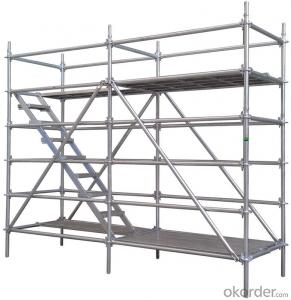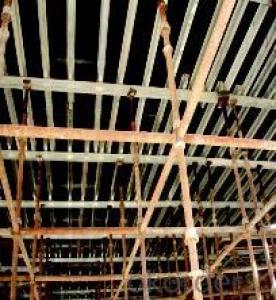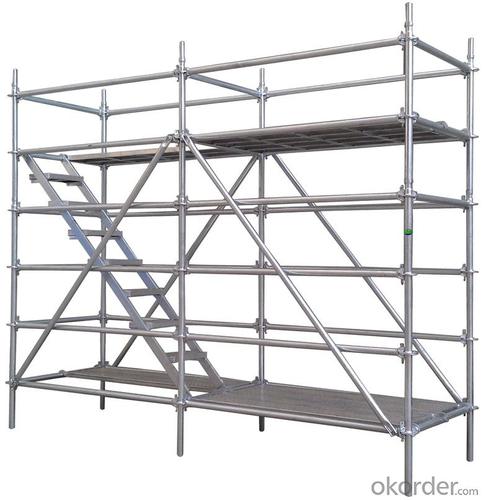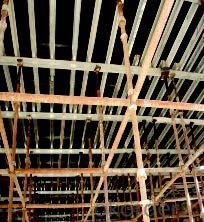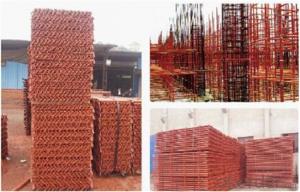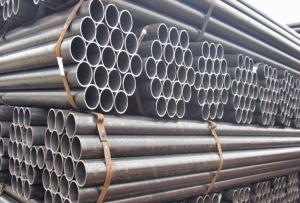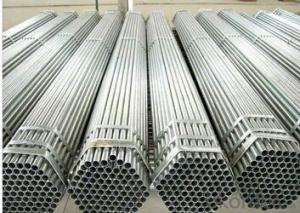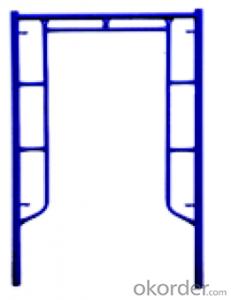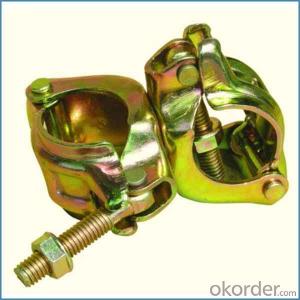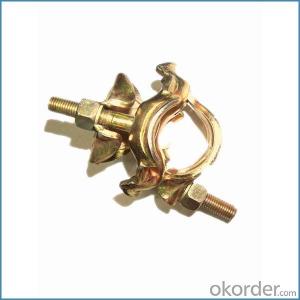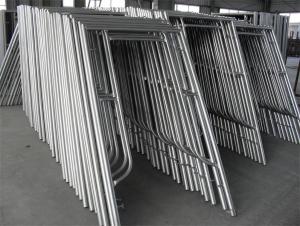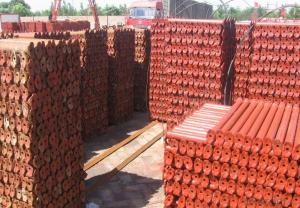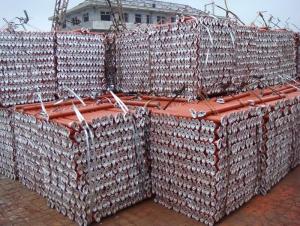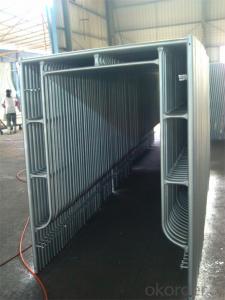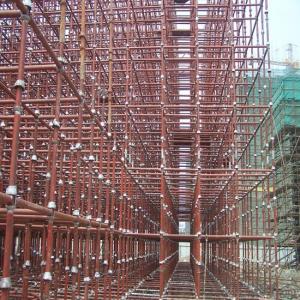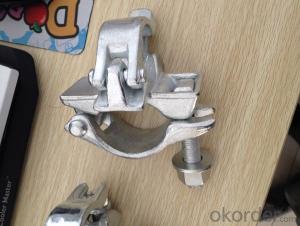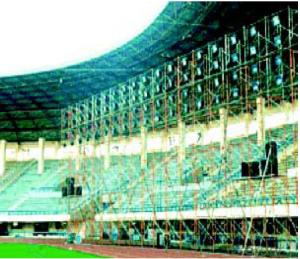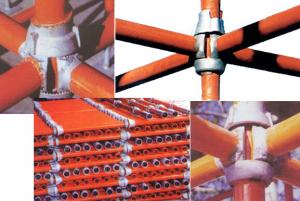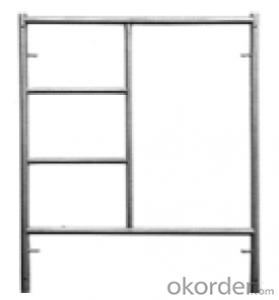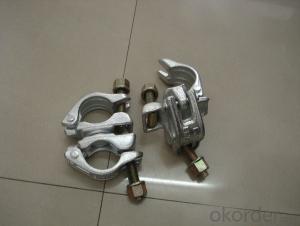China Supplier Props Scaffolding for Construction Projects
- Loading Port:
- Qingdao
- Payment Terms:
- TT OR LC
- Min Order Qty:
- 100 pc
- Supply Capability:
- 30000 pc/month
OKorder Service Pledge
OKorder Financial Service
You Might Also Like
Model NO.:WM-SCAFFOLD
Type: Fixed
Material: Metal
Construction Properties: Installation Scaffold
Lapping Form: Single Row Scaffolding
Framework: Combined Scaffolding
Supporting Mode: Floor Type Scaffolding
Erection Position: External Scaffolding
Scaffolding Part Type: Scaffolding Props
Move Method: Attached Lifting Scaffolding
Structural Style:Multi-Pole Scaffolding
Size:122mm
Export Markets:Global
T6061 Form Work Aluminium Beam for Table Formwork(Tableform),Slab Formwork, Wall Formwork, Column Formwork in Concrete Formwork System Made By Excrustion Aluminium Profile in Size of 122mm, 165mm, 185mm etc to meet clients and project requirement in different countries.
CNBM is a leading scaffolding, Steel Pipe, Formwork Product manufacturer and Exporter with 50, 000m2 advance AUTO production lines by ISO9001 management system, specialize in producing high quality steel Scaffolding System, Scaffolding Accessories, Formwork Panels and Formwork Accessories , Scaffold Tubes and GI Pipes.
With decades years Manufacturing and Exporting,CNBM, supplies and worked for clients from 49 Countries in satisfied safety quality and competitive price and service. .
Safety is Life of Scaffolding Manufacturer, Wellmade Scaffold Controls Scaffolding Quality By Strict Management System and Own Independent Testing Throughout Full Production Processes On
1) Raw Materials Steel Testing
2) Welding Line Testing
3) Loading Capacity Testing
4) Scaffold Elements Assembly Inspection
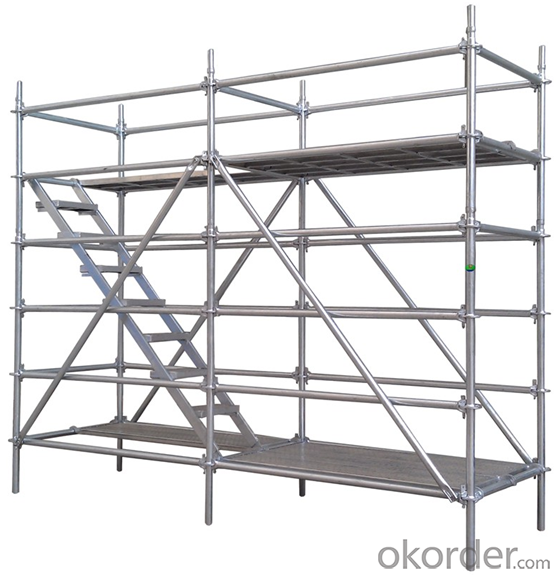
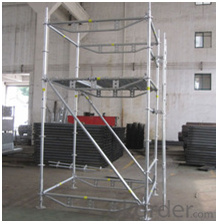
- Q: How do steel tube couplers prevent corrosion or deterioration of scaffolding connections over time?
- Steel tube couplers are designed to prevent corrosion or deterioration of scaffolding connections over time through a combination of material selection, design features, and protective measures. Firstly, steel tube couplers are typically made from high-quality, corrosion-resistant steel alloys such as galvanized or stainless steel. These alloys have inherent properties that make them resistant to rust and corrosion, even when exposed to harsh environmental conditions such as moisture, chemicals, or extreme temperatures. This ensures that the couplers remain structurally sound and maintain their integrity over time. Additionally, the design of steel tube couplers plays a crucial role in preventing corrosion or deterioration. These couplers are engineered to provide a tight and secure connection between scaffolding tubes, minimizing any gaps or openings that could allow moisture or other corrosive agents to penetrate the joint. By creating a sealed connection, the couplers effectively prevent the entry of water, oxygen, or other corrosive substances that could lead to rust or deterioration over time. Furthermore, steel tube couplers often incorporate protective measures to enhance their resistance to corrosion. One common protective measure is the application of a galvanized coating, which involves applying a layer of zinc to the surface of the coupler. This zinc coating provides an additional barrier against corrosion and acts as a sacrificial layer, meaning it corrodes before the underlying steel, further prolonging the lifespan of the coupler. Regular maintenance and inspection are also essential to prevent corrosion or deterioration of steel tube couplers and scaffolding connections. This includes inspecting the couplers for signs of damage or wear, addressing any areas with chipped or damaged coatings, and promptly replacing couplers that show signs of significant corrosion or structural compromise. In conclusion, steel tube couplers prevent corrosion or deterioration of scaffolding connections over time through the use of corrosion-resistant materials, tight and sealed connections, protective coatings, and regular maintenance. These measures ensure that couplers remain structurally sound and reliable throughout the lifespan of the scaffolding system, promoting safety and longevity in construction projects.
- Q: How do steel tube couplers ensure a tight connection between tubes?
- A secure connection between tubes is achieved with steel tube couplers, which utilize a combination of design features and mechanical principles. The couplers are specifically engineered to tightly fit the corresponding tubes, ensuring a secure connection. The inner diameter of the coupler is accurately machined to match the outer diameter of the tube, allowing for a snug fit. Enhancing the connection further, the couplers typically employ a threaded design. When the coupler is tightened onto the tube, the threads engage with each other, creating a robust and secure joint. This threading mechanism enables a controlled application of torque, guaranteeing a tight connection without causing damage to the tubes. Moreover, steel tube couplers often incorporate additional elements to enhance the connection. For instance, some couplers feature internal gripping teeth or serrations that bite into the surface of the tube, increasing friction and preventing slippage. This ensures a tight and dependable connection. In summary, steel tube couplers combine precise machining, threaded design, and additional gripping features to provide a secure connection between tubes. These elements work together to create a joint that can withstand various forces and maintain its integrity over time.
- Q: How often should steel tube couplers be inspected for damage or wear?
- Regular inspections of steel tube couplers for damage or wear should ideally be conducted on a quarterly basis. However, the specific usage and conditions the couplers are exposed to may affect the frequency of inspections. In environments with high traffic or harsh conditions, it is advisable to consider more frequent inspections, such as monthly or even weekly. Safety should be prioritized, and identifying any potential issues with the couplers at an early stage is crucial. By conducting regular inspections, timely repairs or replacements can be made, thereby minimizing the risk of accidents or failures. Additionally, it is recommended to adhere to manufacturer recommendations and industry standards to determine the appropriate inspection frequency for steel tube couplers.
- Q: Are steel tube couplers adjustable for different angles and positions?
- No, steel tube couplers are not adjustable for different angles and positions. Steel tube couplers are designed to provide a secure connection between two steel tubes, ensuring structural integrity and stability. They are typically used in construction and engineering applications, where precision and strength are crucial. However, if there is a need for adjustable angles and positions, alternative solutions such as swivel couplers or adjustable fittings should be considered. These options allow for flexibility and adjustments in various angles and positions, offering more versatility in construction projects.
- Q: How do steel tube couplers affect the stability and rigidity of a scaffolding structure?
- The stability and rigidity of a scaffolding structure heavily rely on steel tube couplers. These crucial components are designed to connect and secure the steel tubes used in constructing the scaffolding system. By creating a strong and dependable connection between the tubes, they improve the overall stability and rigidity of the structure. One way in which steel tube couplers impact stability is by preventing any movement or displacement of the individual tubes. They firmly hold the tubes together, ensuring that they do not slide or shift out of position. This guarantees that the scaffolding remains stable, even when faced with external forces like wind or vibrations from workers or equipment. Furthermore, steel tube couplers contribute to the rigidity of the scaffolding structure by eliminating any gaps or play between the tubes. This tight connection enhances the scaffold's load-bearing capacity and minimizes any deflection or bending of the structure. As a result, the scaffolding can support heavy loads and provide a secure working platform for workers. Moreover, the use of steel tube couplers allows for the construction of various types of scaffolding configurations. Couplers enable the connection of tubes at different angles, accommodating the specific requirements of the job site. This flexibility enhances the stability of the structure, especially on uneven terrain or in the presence of complex architectural features. To summarize, steel tube couplers are indispensable components of a scaffolding structure. Their role in enhancing stability and rigidity is crucial. By securely connecting and preventing any movement between the steel tubes, these couplers ensure the stability of the scaffolding and its ability to bear heavy loads. Additionally, they provide flexibility in construction configurations, allowing for adaptability to different job site conditions. Ultimately, the use of steel tube couplers is vital for creating a safe and robust scaffolding system.
- Q: scaffolding fell on me on my way to work in june.how long will the compensation take. they are liable?
- The insurance company, who is the entity that will eventually be paying you, can drag it out for several years. The sort of response that you will get from them is the matter is still under investigation, and the courts will allow that. They will keep trying to wear your patience down and when they think they have you, they will offer you a piddling amount in the hope that you will settle to bring the matter to an end. It is a well tried method and I regret to tell you that in 90% of the cases it is what happens. If you feel that you have been damaged and it is worth the effort, stick to your guns and hold out for the amount, within reason, that you feel you should get.
- Q: What types of steel tube couplers are available for scaffolding?
- There are several types of steel tube couplers available for scaffolding, each with its own unique features and applications. 1. Sleeve Couplers: These are the most common type of couplers used in scaffolding. They consist of a cylindrical sleeve with internal teeth that grip the tubes when tightened with a bolt. Sleeve couplers are used to connect two tubes at right angles or to extend the length of a tube. 2. Swivel Couplers: These couplers are used to connect two tubes at any angle. They have a swivel mechanism that allows for 360-degree rotation, providing flexibility in scaffold design. Swivel couplers are commonly used in situations where the scaffolding needs to be adjusted or adapted to fit irregular shapes or tight spaces. 3. Putlog Couplers: Putlog couplers are used to connect tubes to walls or other structures. They have a flat plate that is secured to the wall, and the tube is inserted into a socket and secured with a bolt. Putlog couplers are commonly used in bricklaying or masonry work, where the scaffold needs to be attached to the building. 4. Girder Couplers: These couplers are specifically designed for connecting scaffold tubes to steel girders or beams. They have a wider jaw opening to accommodate the larger size of the girder, providing a secure connection. Girder couplers are commonly used in construction projects where the scaffolding needs to be attached to steel structures. 5. Gravlock Couplers: Gravlock couplers are a type of sleeve coupler that uses a gravity-activated locking mechanism. They have a spring-loaded latch that automatically locks the tubes in place when they are inserted into the coupler. Gravlock couplers are quick and easy to use, making them ideal for rapid assembly or disassembly of scaffolding. It is important to note that the specific type of coupler used will depend on the design requirements and regulations of the scaffolding project. It is recommended to consult with a scaffolding professional or engineer to determine the appropriate type of coupler for your specific needs.
- Q: What are the common methods of securing steel tube couplers to scaffolding tubes to prevent loosening or detachment?
- There are several common methods of securing steel tube couplers to scaffolding tubes to prevent loosening or detachment. These include using a hammer to strike the coupler firmly onto the tube, tightening the coupler using a spanner or wrench, ensuring that the coupler is properly aligned with the tube, and using safety pins or clips to further secure the coupler in place. Additionally, regular inspections and maintenance of the scaffolding is crucial to identify any loose or detached couplers and address them promptly.
- Q: Are there any guidelines for the proper torque or tightening of steel tube couplers in scaffolding?
- Yes, there are guidelines for the proper torque or tightening of steel tube couplers in scaffolding. These guidelines are important to ensure the safety and stability of the scaffolding structure. The primary guideline is to follow the manufacturer's instructions for the specific type of steel tube couplers being used. Each manufacturer may have specific torque requirements that should be followed to ensure proper installation and secure connections. It is important to read and understand these instructions before attempting to tighten the couplers. In general, the torque required for steel tube couplers is typically specified in Newton meters (Nm) or foot-pounds (ft-lbs). The recommended torque values can vary depending on the size and type of the coupler, as well as the load that the scaffolding will be subjected to. To achieve the proper torque, it is recommended to use a torque wrench or other calibrated tool to ensure accurate tightening. Hand tightening should be avoided as it may not provide sufficient torque or consistent results. Additionally, it is important to inspect the steel tube couplers regularly to ensure they remain properly tightened. Over time, vibrations and other factors can cause the couplers to loosen, compromising the stability of the scaffolding. Regular inspections and re-tightening as necessary are essential to maintain a safe working environment. Ultimately, it is crucial to consult the manufacturer's guidelines and follow their specific recommendations for the torque or tightening of steel tube couplers in scaffolding to ensure the highest level of safety and stability.
- Q: Can steel tube couplers be used in scaffolding systems that require quick assembly and disassembly?
- Yes, steel tube couplers can be used in scaffolding systems that require quick assembly and disassembly. Steel tube couplers provide a strong and secure connection between scaffolding tubes, allowing for efficient and rapid installation and removal of scaffolding components. They ensure stability and safety, making them suitable for scaffolding systems that require frequent assembly and disassembly.
Send your message to us
China Supplier Props Scaffolding for Construction Projects
- Loading Port:
- Qingdao
- Payment Terms:
- TT OR LC
- Min Order Qty:
- 100 pc
- Supply Capability:
- 30000 pc/month
OKorder Service Pledge
OKorder Financial Service
Similar products
Hot products
Hot Searches
Related keywords
